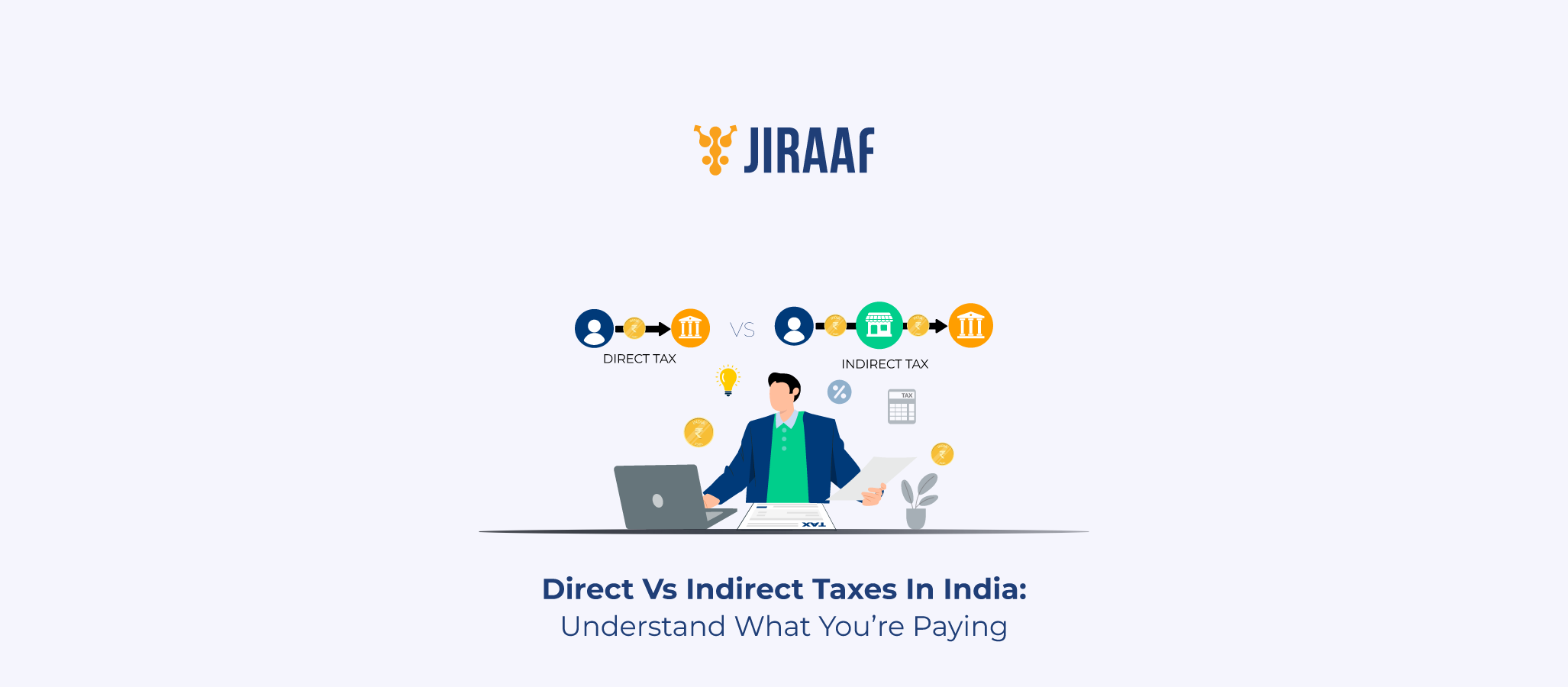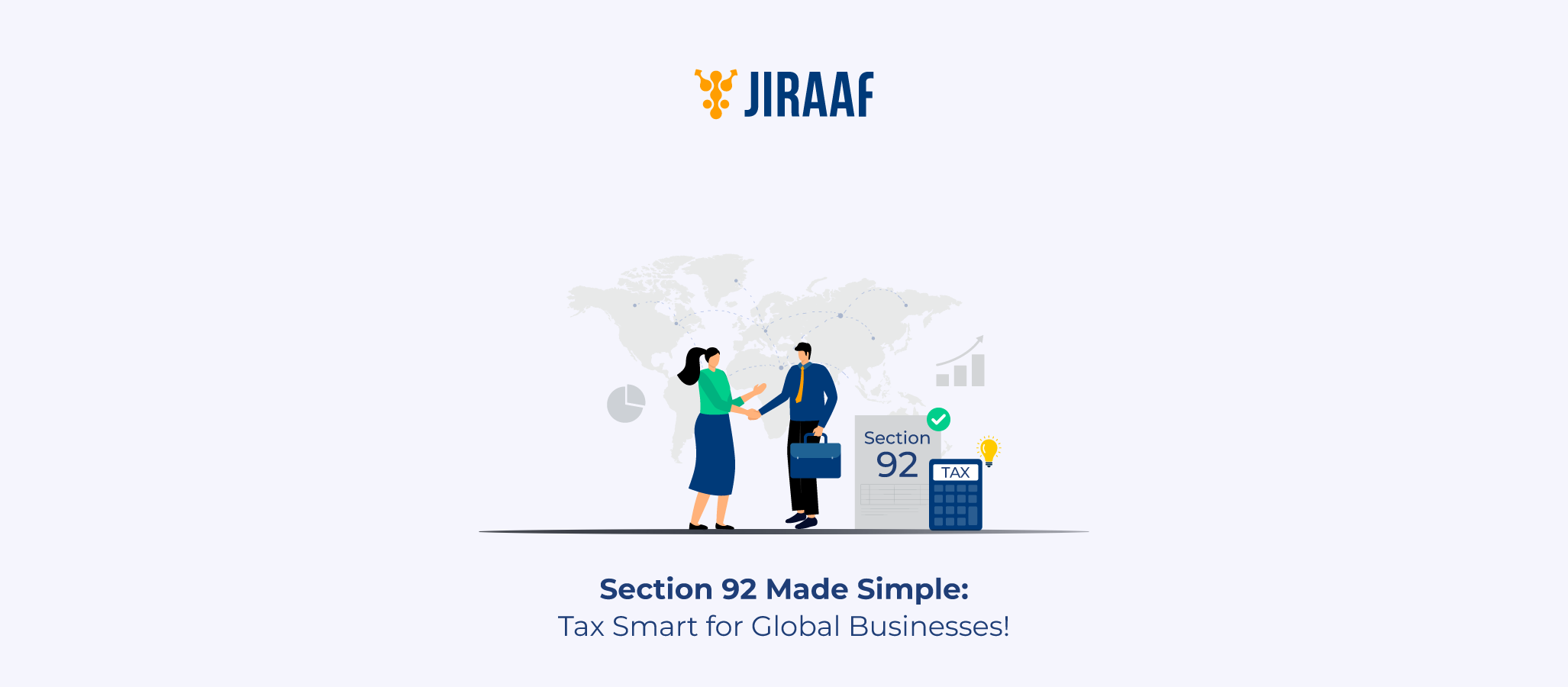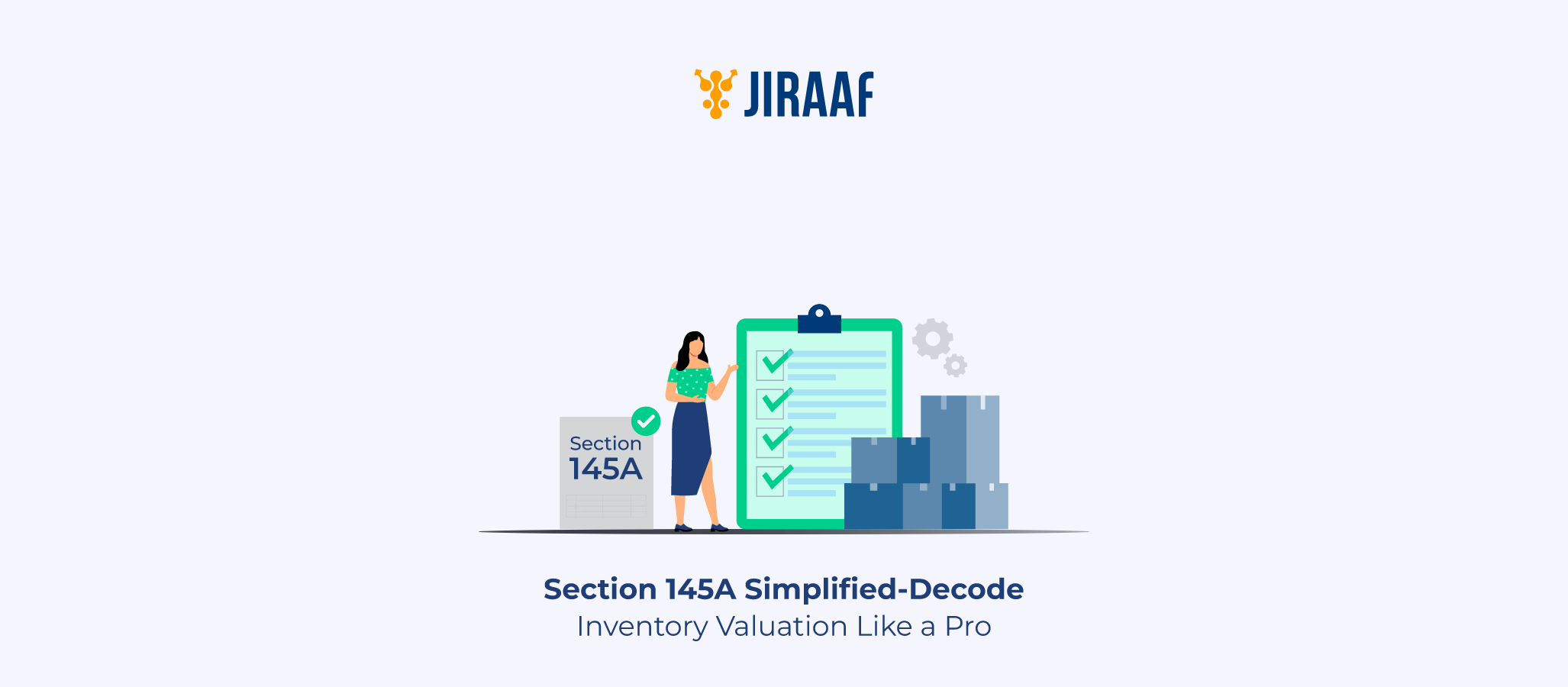Taxes are a certainty of life. In India, taxes fall broadly into two categories: direct tax and indirect tax. While one is levied on income, the other is embedded in nearly everything you purchase.
Consider this: as the financial year ends, you carefully review your salary slips, bank statements, and investment proofs to file your Income Tax Return. This is your interaction with direct taxes—those you pay directly to the government based on your income or profits.
On the other hand, every time you dine at a restaurant, shop online, or refill your vehicle, you’re also paying indirect taxes, such as GST, which are included in the price of goods and services. These are collected by businesses on behalf of the government and often go unnoticed in daily transactions.
Understanding how these two types of taxes work is more than just a matter of compliance—it’s essential for effective financial planning, responsible citizenship, and informed financial choices.
In this blog, we will explore the definitions, differences, and practical examples of both direct and indirect taxes in the Indian context, helping you navigate your obligations with greater confidence.
What is Direct Tax?
A direct tax is a form of taxation wherein the liability is borne by an individual or an entity upon whom it is levied. These taxes are paid directly to the government without the involvement of intermediaries and are assessed on parameters such as income, profit, or ownership of assets. The tax liability of direct tax cannot be shifted to another party.
Here are the key attributes of direct taxes:
- Direct tax remittance: The incidence and tax burden lie with the taxpayer. The imposed entity remits the tax directly to the government.
- Progressive in nature: Higher-income-generating individuals and entities are taxed at a higher rate.
- Non-transferable liability: The tax liability, as well as the responsibility for payment, cannot be transferred or assigned.
- Calculation and Compliance: The onus of calculating tax liability and ensuring compliance lies with the entity being imposed, not the tax department.
Direct tax example
You are a 30-year-old professional working at a tech company in Bengaluru, earning ₹10,00,000 annually.
Under the old tax regime, you claimed deductions of:
- ₹1,50,000 under Section 80C (investments in ELSS, PPF, LIC, etc.)
- ₹25,000 under Section 80D (health insurance premium)
This brings your taxable income down to ₹8,25,000.
Based on the current income tax slabs for individuals below 60, your tax liability would be approximately:
- ₹12,500 on income between ₹2.5 lakh and ₹5 lakh (5%)
- ₹75,000 on income between ₹5 lakh and ₹8.25 lakh (20%)
Total Tax = ₹12,500 + ₹75,000 = ₹87,500
(plus cess of 4% = ₹3,500)
Total Tax Payable: ₹91,000 annually
This is a direct tax because the tax will be paid directly to the government, your tax liability will be calculated based on your income, and you cannot transfer your income tax liability to someone else.
Common Types of Direct Taxes
- Income Tax: This is the most widely discussed and popular direct tax type for individual taxpayers, Hindu Undivided Families (HUFs), and businesses. Income tax applies to everyone who generates a regular income above a certain threshold. India currently has two income tax regimes, namely the ‘Old Income Tax Regime’ and the ‘New Income Tax Regime’. The tax slabs and deductions for both regimes are different. As an individual taxpayer, you must select a regime and file your taxes under the chosen regime.
- Corporate Tax: Corporate tax is levied on organizations registered under the Companies Act in India. Domestic firms are taxed at a rate of 25% (for turnover up to ₹400 crore), and foreign firms are taxed at a rate of 40% under the current corporate tax regime. New manufacturing companies benefit from concessional rates as low as 15%. This tax affects company profits, dividend payouts, and investment decisions.
Corporate tax is a significant source of government revenue. A higher tax revenue also has a signalling impact on investors, as higher tax collection could mean good revenues.
- Capital Gains Tax: Capital gains tax is levied on short-term and long-term gains received from your investments, such as stocks, mutual funds, and immovable property.
Selling shares held for more than a year incurs long-term capital gains (LTCG), which are taxed at a rate of 12.5%. On the other side—say, you bought and sold shares of a listed company within a year—you will have to pay 20% tax on your gains as per short-term capital gains (STCG).
- Securities Transaction Tax (STT)
STT is levied on stock market trades. Every time you buy or sell shares on the NSE/BSE, you pay a small Securities Transaction Tax (STT) percentage, which directly contributes to the exchequer.
These are the direct taxes prevalent under the current tax regimes in India. Some other tax types, such as the Dividend Distribution Tax (DDT), are no longer applicable.
Who Is Eligible for Direct Tax?
Anyone earning income above a specified threshold is liable to pay direct taxes. This includes:
- Salaried employees: If your annual income exceeds ₹2.5 lakh under the old regime (₹4 lakh under the new one), you’re in the tax net.
- Self-employed professionals and freelancers: Whether you’re a freelance designer or a YouTube content creator, your earnings are taxable once you cross the threshold as mentioned earlier. Filing ITR-3 or ITR-4, depending on your business structure, becomes necessary.
- Businesses: Whether you own a kirana store or a large manufacturing firm, anyone making profits is liable for tax on net income in accordance with the company’s tax slab.
- Investors: If you book profit by selling some of your stocks after holding it for more than a year, that’s LTCG, and your gains will be taxed at 12.5%. If the gains were booked within 1 year, 20% STCG will be applicable on your gains.
- Landlords: If you own rental property and earn rent beyond ₹2.5 lakh annually (excluding standard deductions), you’re liable to pay tax on that income according to your tax slab.
All these categories of earners are subject to taxation in India. One notable exemption to taxation is agriculture and related income. This means Indian farmers are exempt from direct taxes.
What is Indirect Tax?
The 18% goods and services tax (GST) on your dining out bill is an indirect tax. So is the GST portion in the maximum retail price (MRP) you pay for goods and services. The GST rates for different products vary; most products and services in India are subject to GST.
GST is the most prominent form of indirect tax in India. As the name suggests, you don’t pay indirect tax to the government. Instead, it is baked into the price of goods and services you consume.
Indirect taxes are collected by intermediaries, such as businesses, who then deposit them with the government. You’re paying the tax, but someone else is handling the logistics.
Indirect Tax Example
You are planning a vacation and are considering stay options. You like a villa that costs Rs. 5,000 per night, but the price does not include GST. When you proceed with the booking, you realize that your final cost per night has turned out to be Rs. 5,900, as your booking falls under the 18% GST slab. Here, you end up paying the GST amount to the rental company, and they remit it to the relevant government authority.
Common Types of Indirect Taxes
- Goods and Services Tax (GST): This unified tax replaced VAT, service tax, and excise duty. This is a comprehensive, multi-stage, destination-based tax levied on every value addition.
Goods and Services Tax (GST) in India is divided into five main slabs: 0%, 5%, 12%, 18%, and 28%.
- 0%: Essential items like fresh fruits, vegetables, and unbranded food grains, etc.
- 5%: Common necessities such as packaged food and public transport, etc.
- 12% & 18%: Standard goods and services like garments, electronics, and restaurants
- 28%: Luxury items and sin goods like tobacco, cars, and high-end appliances.
The GST Council determines GST rates, which are subject to change over time. GST collections are one of the largest sources of revenue for the government.
- Customs Duty: This is a type of indirect tax levied on goods imported into or exported from the country. Whenever you import a product from abroad, such as a high-end smartphone, luxury watch, or foreign liquor, customs duty is charged, making those goods more expensive compared to similar domestically produced items.
- Excise Duty (pre-GST): Previously applied to the production of goods, this duty now mainly applies to specific products, such as petroleum and alcohol, which remain outside the GST system.
Everyone in the country pays indirect taxes. This makes the indirect tax net much broader and deeper than the direct tax net.
Difference Between Direct and Indirect Taxes
The difference between direct and indirect taxes isn’t just academic. It’s practical and affects you daily. Let’s break it down:
| Feature | Direct Tax | Indirect Tax |
| Who Pays | You pay directly to the government | Collected from you by sellers or service providers |
| Tax Base | Based on income, profits, or wealth | Based on consumption or use of goods/services |
| Transferability | Non-transferable—you bear the burden | Transferable passed on to the end consumer |
| Progressiveness | Progressive—higher earners pay more | Regressive—same rate for all |
| Filing Responsibility | Requires annual self-filing and declaration | Automatically embedded in transactions |
| Transparency | Fully visible—filed and tracked individually | Less visible hidden in final prices |
| Examples | Income tax, capital gains tax, corporate tax | GST, customs duty, entertainment tax |
| Relief Available | Deductions under 80C, 80D, etc. (limited to old regime) | Limited reliefs, usually via exemptions |
| Tax Authority | Income Tax Department | Central Board of Indirect Taxes and Customs (CBIC) |
Why Understanding These Taxes Matters
Once you grasp the mechanics of taxes, you’re not just reacting to deductions—you’re planning for them. And that can mean significant savings, better investments, and more informed decisions.
Smarter Tax Planning
Let’s say you know your salary is inching toward the 20% tax slab. You can invest ₹1.5 lakh under Section 80C in PPF, ELSS, or life insurance to lower your tax liability. Without that knowledge, you’d overpay tax unnecessarily.
More Strategic Spending
Understanding GST rates prompts you to reconsider your purchases. For instance, luxury goods such as watches and cars attract a 28% GST. Knowing that might prompt you to adopt better budgeting practices or consider more innovative alternatives.
Tax-Efficient Investments
Choosing between a tax-free fixed income instrument (like PPF) and a taxable FD becomes easier when you understand how interest is taxed. A ₹10 lakh investment in FD at 7% yields ₹70,000/year—but that’s taxed. The same amount in PPF is entirely tax-free.
Maximizing Deductions
When you understand direct tax deductions under Sections 80D (health insurance), 24(b) (home loan interest), and 10(14) (HRA), you’re more likely to structure your finances efficiently.
Conclusion: Direct vs Indirect Tax in a Nutshell
Direct and indirect taxes are two sides of the same coin. One takes a slice of your income; the other skims from your spending. While direct taxes are about what you earn or own, indirect taxes tap into how and what you consume.
Knowing the difference isn’t just academic—it’s a practical skill. It helps you file taxes correctly, make informed purchase decisions, and invest in a way that minimizes your tax outgo. As the government continues to simplify tax laws and promote digital compliance, being tax-aware will give you a clear financial and legal advantage.
In the end, you can’t escape taxes—but you can understand them, optimize them, and even use them to your benefit.
Discover fixed income investments with Jiraaf, a SEBI registered online bonds platform that educates and brings access to a wide array of bonds. Sign up today to explore diversified fixed income investment opportunities to support your goal-based wealth creation journey. Start investing!




